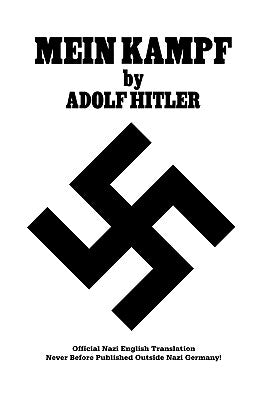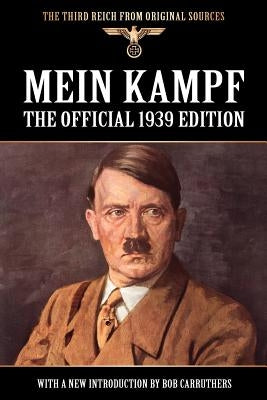The Evolution of Japanese Literature

Japanese literature is a treasure trove of cultural and artistic expression, reflecting the unique history, philosophy, and social changes of Japan over centuries. From the poetic elegance of the Heian period to the profound narratives of modern fiction, the evolution of Japanese literature offers a captivating journey through time. This article delves into the key periods, influential authors, and the shifting themes that have shaped Japanese literary traditions, providing a comprehensive overview of its development.
1. The Nara Period (710–794): The Birth of Written Literature
Japanese literature began to take shape during the Nara period, heavily influenced by Chinese culture and writing systems. The introduction of kanji (Chinese characters) allowed for the transcription of oral traditions and the creation of the earliest Japanese texts. Notable works from this era include the Kojiki (Records of Ancient Matters) and Nihon Shoki (Chronicles of Japan), which are both historical chronicles blending myth and history to record the origins of Japan and its imperial family.
Another significant work is the Man'yōshū (Collection of Ten Thousand Leaves), the oldest anthology of Japanese poetry. This collection is known for its diverse voices, including poems by emperors, nobles, and commoners, reflecting the breadth of Japanese society at the time.
2. The Heian Period (794–1185): The Golden Age of Literature
The Heian period is often regarded as the golden age of classical Japanese literature. During this time, the kana script (hiragana and katakana) was developed, allowing for the creation of works that were distinctly Japanese rather than imitative of Chinese models. This period saw the flourishing of court literature, particularly by female authors.
One of the most famous works from this era is The Tale of Genji by Murasaki Shikibu, often considered the world's first novel. This intricate narrative provides a detailed portrayal of court life and the emotional complexities of its characters. Another key work is The Pillow Book by Sei Shōnagon, a collection of essays, lists, and anecdotes that offer a witty and insightful glimpse into the life of a court lady.
These works highlight the importance of personal expression and the exploration of human emotions, themes that would continue to influence Japanese literature for centuries.
3. The Kamakura and Muromachi Periods (1185–1573): The Rise of Warrior Tales and Buddhist Themes
The Kamakura period marked a shift in Japanese literature, reflecting the changing social order as the samurai class rose to power. This era saw the emergence of gunki monogatari (war tales), which chronicled the exploits of warriors and the conflicts that shaped medieval Japan. The most famous of these is The Tale of the Heike, an epic account of the Genpei War between the Taira and Minamoto clans. The work is notable for its Buddhist themes, emphasizing the impermanence of life and the futility of worldly ambitions.
Buddhism, particularly the teachings of Zen, also had a profound influence on literature during this period. Tsurezuregusa (Essays in Idleness) by Yoshida Kenkō is a classic example of zuihitsu (random jottings), a genre that reflects the author's musings on the transient nature of life and the importance of finding beauty in the everyday.
The Muromachi period continued the themes of war and religion but also saw the development of renga (linked-verse poetry) and noh drama, both of which would have lasting impacts on Japanese literary forms.
4. The Edo Period (1603–1868): The Blossoming of Popular Literature
The Edo period was a time of peace and stability in Japan, leading to the growth of a vibrant urban culture. This era saw the rise of popular literature, including ukiyo-zōshi (books of the floating world) and kabuki plays, which catered to the tastes of the burgeoning merchant class.
One of the most influential authors of this period was Ihara Saikaku, known for his witty and often satirical depictions of urban life. His work, The Life of an Amorous Man, is a classic example of ukiyo-zōshi, exploring the pleasures and pitfalls of the floating world—a term used to describe the pleasure-seeking urban lifestyle.
The Edo period also witnessed the development of haiku, a poetic form that distilled complex emotions and observations into a mere 17 syllables. Matsuo Bashō, the most famous haiku poet, combined the simplicity of haiku with deep philosophical insights, as seen in his travelogue, The Narrow Road to the Deep North.
5. The Meiji Period (1868–1912): The Western Influence
The Meiji Restoration brought about significant changes in Japanese society, including the opening of the country to Western influences. This period of modernization and rapid change also affected literature, leading to the blending of Western literary forms with traditional Japanese themes.
Futabatei Shimei's The Drifting Cloud is often cited as the first modern Japanese novel, reflecting the influence of Western realism. Natsume Sōseki, one of Japan's greatest novelists, also emerged during this time. His works, such as Kokoro and I Am a Cat, explore the psychological and social challenges faced by individuals in a rapidly changing society.
The Meiji period marked the beginning of modern Japanese literature, where authors began to experiment with new styles and address contemporary issues, setting the stage for the literature of the 20th century.
6. The Taishō and Shōwa Periods (1912–1989): The Birth of Modernism
The early 20th century was a time of great experimentation in Japanese literature, as writers responded to the social upheavals of the time, including the aftermath of World War I and the rise of militarism. Modernist movements, influenced by Western literature, began to take hold, with authors exploring themes of alienation, identity, and the absurd.
Ryūnosuke Akutagawa, known for his short stories, such as "Rashōmon" and "In a Grove," exemplified this modernist approach, often delving into the darker aspects of human nature. Meanwhile, Yasunari Kawabata, who would later become Japan's first Nobel laureate in literature, wrote evocative, minimalist works like Snow Country and The Sound of the Mountain, focusing on the beauty and sadness of life.
Post-World War II literature, particularly during the Shōwa period, grappled with the trauma of war and the challenges of rebuilding. Writers like Yukio Mishima and Kenzaburō Ōe explored themes of identity, nationalism, and existential crisis, contributing to a rich and complex body of work that resonated both in Japan and internationally.
7. Contemporary Japanese Literature: Global Voices and Diverse Themes
Today, Japanese literature continues to evolve, reflecting the diverse voices and experiences of modern Japan. Haruki Murakami, one of the most internationally recognized Japanese authors, blends elements of magical realism, pop culture, and existential philosophy in his novels, such as Norwegian Wood and 1Q84. His works resonate with global audiences, exploring themes of loneliness, identity, and the surreal nature of modern life.
Other contemporary authors, such as Banana Yoshimoto and Sayaka Murata, bring fresh perspectives on gender, society, and the human condition, often challenging traditional norms and exploring the complexities of contemporary life in Japan.
The influence of manga and anime has also expanded the reach of Japanese literature, bringing it to new audiences around the world. Writers like Natsuo Kirino and Keigo Higashino, known for their crime fiction and psychological thrillers, demonstrate the diversity and vibrancy of contemporary Japanese literary culture.
The Evolution of Japanese Literature
The evolution of Japanese literature is a testament to the enduring power of storytelling and the rich cultural heritage of Japan. From the classical works of the Heian period to the modern masterpieces of today, Japanese literature offers a window into the soul of a nation, reflecting its values, struggles, and aspirations over the centuries.
Explore your favorite book at your own online bookstore.Happy Reading!











